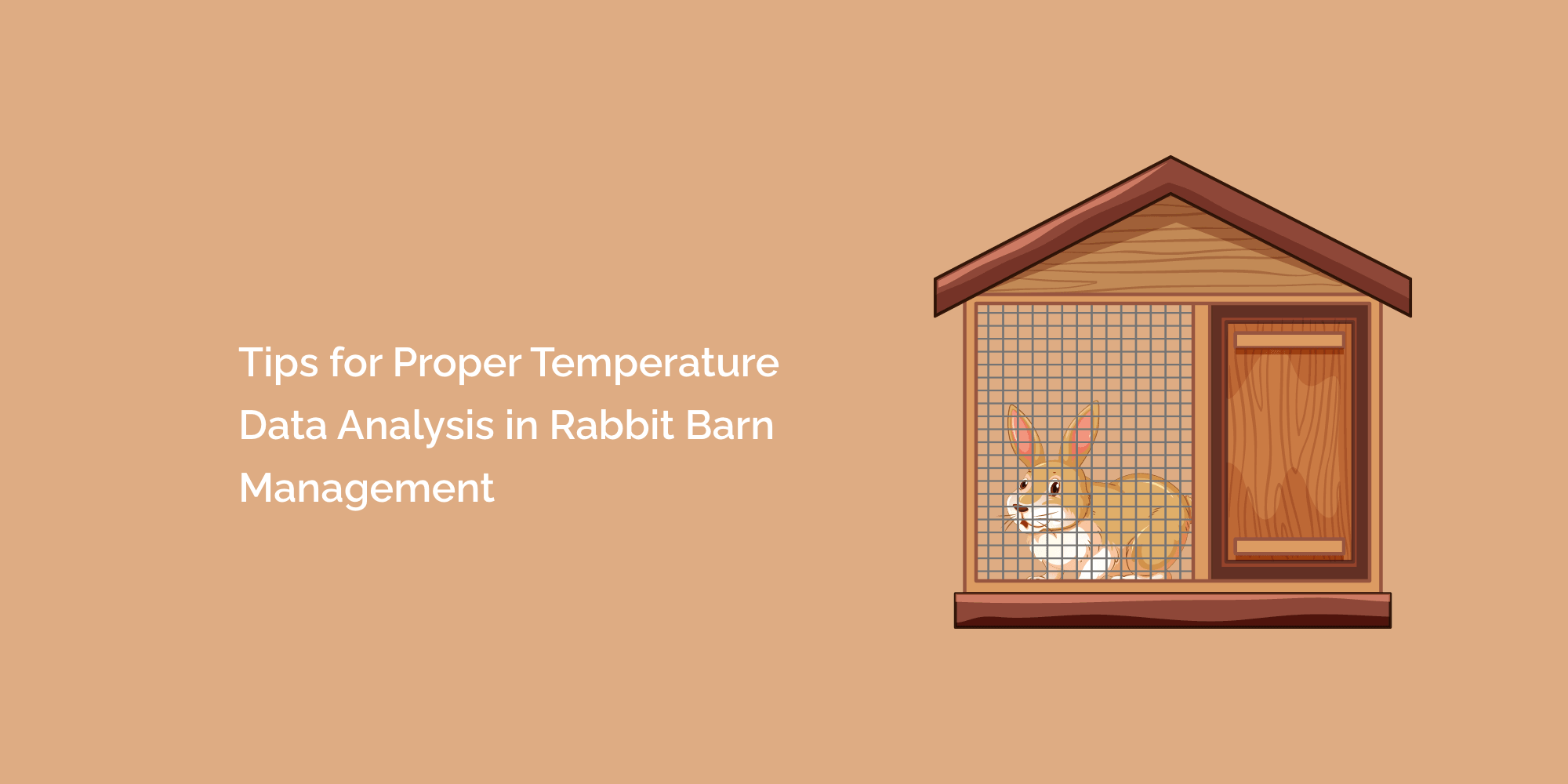Temperature data analysis is a crucial aspect of effective rabbit barn management. Proper temperature control ensures the well-being, health, and productivity of the rabbits. However, to make informed decisions and optimize the barn's environment, it's essential to analyze temperature data accurately.
In this blog, we will explore the importance of temperature data analysis in rabbit farming, the key factors to consider when analyzing data, and practical tips for using the information to enhance rabbit barn management.
The Significance of Temperature Data Analysis in Rabbit Farming
1.1 Ensuring Optimal Rabbit Welfare
Temperature plays a vital role in the overall welfare of rabbits. Analyzing temperature data allows farmers to identify potential issues, such as heat stress or cold exposure, and make timely adjustments to maintain an optimal and comfortable environment.
1.2 Improving Productivity and Reproductive Performance
Proper temperature control positively impacts rabbit productivity. Analyzing temperature data can help optimize the barn's conditions, leading to better growth rates, improved feed conversion efficiency, and enhanced reproductive performance.
Key Factors to Consider When Analyzing Temperature Data
2.1 Data Collection and Accuracy
The foundation of temperature data analysis is accurate data collection. Farmers must invest in reliable temperature sensors and ensure their proper placement within the barn. This section will highlight the significance of data accuracy and the consequences of flawed data collection.
2.2 Frequency of Data Collection
To gain valuable insights, temperature data should be collected consistently and at regular intervals. Farmers should determine the appropriate frequency based on the specific needs of their rabbit breed, the barn's location, and the prevailing climate conditions.
2.3 Data Storage and Organization
Organizing and storing temperature data efficiently is crucial for easy access and analysis. This section will explore different data storage methods and highlight the importance of maintaining organized records.
Tips for Effective Temperature Data Analysis
3.1 Identify Seasonal Trends and Patterns
Temperature data analysis should aim to identify seasonal trends and patterns. Understanding how temperature fluctuates throughout the year allows farmers to implement preemptive measures and adjust the barn's environment accordingly.
3.2 Set Optimal Temperature Ranges
Based on the analysis of historical temperature data and rabbit-specific requirements, farmers can establish optimal temperature ranges for different stages of rabbit growth and reproduction. Maintaining these ranges ensures the rabbits are always in a comfortable environment.
3.3 Correlate Temperature Data with Health and Productivity
Analyzing temperature data alongside health and productivity records can reveal valuable correlations. This section will guide farmers on how to assess the impact of temperature on rabbit health, growth, and reproductive performance.
3.4 Implement Data Visualization Techniques
Data visualization tools, such as graphs and charts, can simplify complex temperature data analysis. Visual representations make it easier to identify trends, outliers, and potential issues, aiding in decision-making.
Using Data Analysis to Enhance Rabbit Barn Management
4.1 Real-Time Monitoring and Alerts
Leveraging temperature sensors and automated systems, farmers can receive real-time temperature data and alerts. This section will explore the benefits of immediate notifications, allowing quick responses to any temperature deviations.
4.2 Implementing Precision Temperature Control
Data analysis enables precision temperature control, where automated systems adjust temperature settings based on real-time and historical data. Precision control ensures minimal fluctuations and optimized conditions for the rabbits.
4.3 Integrating Temperature Data with Other Management Aspects
Temperature data analysis should not exist in isolation. This section will emphasize the importance of integrating temperature data with other management aspects, such as feeding, ventilation, and health monitoring, to develop a comprehensive approach to rabbit barn management.
Conclusion
Proper temperature data analysis is integral to successful rabbit barn management. By understanding the significance of temperature data, considering key factors in the analysis process, and implementing data-driven decisions, farmers can optimize the barn's environment, enhance rabbit welfare, and improve productivity and reproductive performance.
Real-time monitoring and precision temperature control further solidify the benefits of temperature data analysis in modern rabbit farming. By embracing these tips and making data analysis an essential part of their management practices, rabbit farmers can foster a thriving and sustainable farming operation that prioritizes the well-being of their rabbits.








